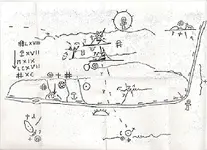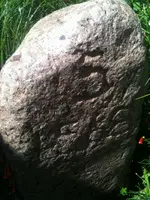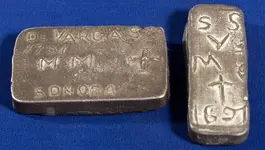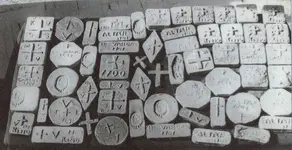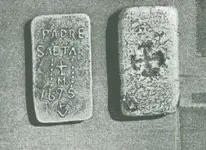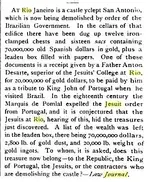The Lost Jesuit Gold of the Sierra Madre
Four bells, the largest weighing 28 arrobas and 17 pounds on which where inscribed Tayopa. One bell inscribed TAYOPA. One bell inscribed REMEDIOS. Weight 11 arrobas and 10 pounds.One small bell inscribed PIEDAD. Weight 5 arrobas. These bells were cast in 1603 by the Right Reverend Father Ignacio Maria de Retana.
One high cross of carved silver from the Tayopa mine, weight 1 arroba, 15 pounds, with an attached crucifix of hammered gold from the Paramo placer.A pair of processional.candle holders and six bars of hammered silver, weighing 4 arrobas, 13 pounds from Santo Nino Mine.Four incensories of silver and gold plated, weighing 1 arroba, 3 pounds from the Cristo Mine. In a cut-stone box are stored jewellery. Box is buried in basement under room built of stone and mud, between the church and side of convent and fruit garden.
One large custody with silver bracket, weighing 1 arroba from Santo Nino Mine, with gold glimmer from placer El Paramo and four fine mounted stones from Remedios Mine.Two silver chalices from the Jesus Maria y Jose Mine, and twelve solid gold cups. Six gold plates made from the Jesus Maria y Jose Mine, and twelve solid gold cups. Six gold plates made from Cristo Mine and Purisima Mine, and two large communion plates of gold made from placer El Paramo.One shrine with four hammered silver columns weighing 4 arrobas from Senor de la Buena Muerto Mine.Sixty-five cargas [packloads] of silver packed in cow-hide bags, each containing 8 arrobas, 12 pounds. Eleven cargas of gold from four mines and placer El Paramo, each wrapped in cloth and cow-hide, with a total weight of 99 arrobas [2512 pounds].Also 183 arrobas of Castilla ore, and 65 arrobas first-class Castilla ore from El Paramo, with a know assay of 22 carats, clean and without mercury.
For the knowledge of our Vicar General, I have written this to inform our Superior. This inventory, written by a Jesuit and sealed on 17 February, 1646, was found by Henry O. Flipper, the Spanish legal expert, surveyor and historian of mines and mining, in 1912. It tallies almost exactly with another of the same date which had been in the possession of the priest of Guadalupe de Santa Ana, a tiny village in Sonora, Mexico, and which came to light in 1927. Both are headed: A true and positive description of the mining camp Real of Our Lady of Guadalupe of Tayopa, made in January 1646, by the Right Reverend Father Guardian Fray, Francisco Villegas Garsina y Orosco, Royal Vicar-General of the Royal and Distinguished Jesuit Order of Saint Ignacio of Tayopa, and Jesuit of the Great Faculty of the Province of Sonora and Biscalla, whom my God keep long years.
The Lost Mines of Tayopa
